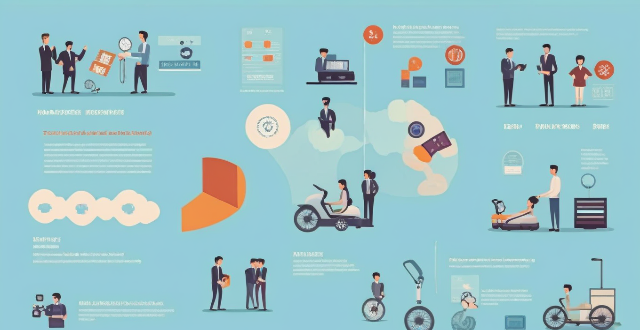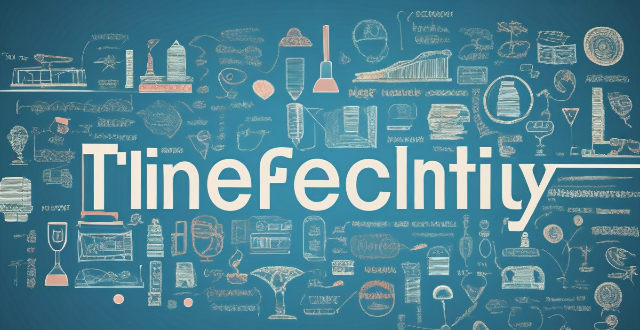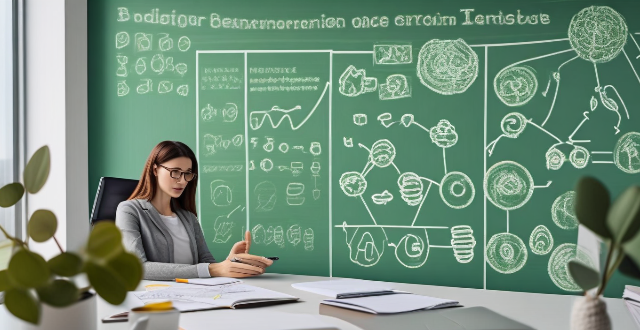Time Productivity

What are the best iPhone apps for productivity ?
Productivity is a key aspect of modern life, and having the right tools can make all the difference. For those who use iPhones, there are numerous apps available that can help boost productivity. Some of the best ones include Evernote, Todoist, Trello, Microsoft Outlook, Notion, Google Drive, Apple Reminders, Slack, Asana, and Bear. These apps cover a wide range of needs, from task management to project collaboration to note-taking. By using these apps effectively, you can boost your productivity and achieve more in less time.

How does procrastination affect productivity and what can be done to avoid it ?
Procrastination negatively impacts productivity by leading to decreased efficiency, increased stress levels, poor quality work, and missed opportunities. To combat procrastination, individuals should set clear goals, prioritize tasks, break down larger tasks into smaller chunks, eliminate distractions, use time management techniques, and hold themselves accountable. Implementing these strategies can help improve productivity and achieve long-term success.

What are some common mistakes people make in time management ?
Effective time management is crucial for productivity, yetEffective time management is crucial for productivity, yet leading to stress and ineff underestimating task time, multitasking, poor planning, not saying 'no', failing to take breaks, perfectionism, disorganization, and ignoring tools and techniques designed to improve time management. Recognizing these mistakes can help individuals improve their time management skills, leading to increased productivity, reduced stress, and better overall well-being.

How can I improve my productivity by managing my time better ?
Managing your time effectively is crucial for improving productivity. Here are some tips on how to do so: Create a To-Do List - Prioritize Tasks - Break Down Larger Tasks Use Time Management Techniques - Pomodoro Technique - Time Blocking Eliminate Distractions - Turn Off Notifications - Create a Distraction-Free Environment Take Breaks and Rest - Schedule Breaks - Get Enough Sleep Learn to Say No - Set Boundaries - Delegate Tasks

Can doing small exercises at my desk improve my productivity ?
Doing small exercises at your desk can improve productivity by increasing energy, reducing stress, improving focus, and enhancing mood. Simple exercises like stretching, isometric exercises, and breathing exercises can be incorporated into your daily routine to maintain an active lifestyle while working at a desk.

What is the Pomodoro Technique and does it really work for enhancing focus ?
The Pomodoro Technique is a time management method designed to improve focus and productivity. It involves working for 25 minutes followed by a short break, with longer breaks after every four Pomodoros. The technique aims to enhance concentration, manage time effectively, reduce procrastination, and boost overall productivity. However, its effectiveness can vary based on individual adaptability and workflow.

What are some tips for managing my time effectively while studying ?
Managing time effectively is crucial for academic success. Create a study schedule by identifying goals, prioritizing tasks, and allocating time. Eliminate distractions by turning off notifications, finding a quiet place, and using focus techniques. Take regular breaks, engage in physical activity, and avoid multitasking. Use tools like time management apps, study groups, and online resources. Stay motivated by setting achievable goals, celebrating accomplishments, and seeking support.

How do successful people manage their time differently from others ?
Undeniably, time is the most valuable asset for everyone, yet highly successful individuals perceive and manage it differently compared to others. Their unique approach towards time management not only maximizes productivity but also fosters personal growth and development. Here's how they do it: ### Topic Summary: 1. **View Time as a Valuable Asset** - Successful people understand that time is precious and use it judiciously. 2. **Maintain a Tightly Scheduled Calendar** - A structured approach ensures focus and productivity. 3. **Prioritize Goals** - Clear objectives help in saying no to distractions. 4. **Delegate Tasks** - Freeing up time to focus on areas of expertise. 5. **Minimize Multitasking** - Focusing on one task at a time enhances quality and reduces errors. 6. **Take Regular Breaks** - Essential for maintaining mental clarity and avoiding burnout. 7. **Continuous Learning and Self-Improvement** - Investing time in acquiring new skills and knowledge. 8. **Maintain a Healthy Lifestyle** - Enhancing physical well-being and cognitive functions. By adopting these strategies, anyone can improve their time management skills and move closer to achieving their goals.

Can you suggest any tools or apps to help with time management ?
The text provides a list of six time management tools and apps, each with its own set of features designed to help users manage their time more effectively. Toggl Track is a time tracking tool that allows users to start and stop timers for different tasks and generates detailed reports. RescueTime is an automatic time tracking app that runs in the background of devices and provides productivity scores. Evernote is a note-taking app that can also be used for creating to-do lists and setting reminders. Trello is a visual project management tool that uses boards, lists, and cards to organize tasks. Google Calendar is a free online calendar for scheduling events and tasks. Forest is a unique app that helps users stay focused by growing virtual trees. The text suggests choosing the tools and apps that align with individual needs and preferences.

How can I prioritize tasks effectively to manage my time better ?
Effective time management involves prioritizing tasks to improve productivity and reduce stress. The process begins with identifying goals, followed by using the Eisenhower Matrix to categorize tasks based on urgency and importance. Breaking down large tasks, maintaining a to-do list, and setting realistic deadlines also aid in efficient task prioritization. These strategies help manage time effectively and achieve success in personal and professional life.

How can I improve my productivity with educational software ?
Educational software can be a powerful tool to enhance your productivity, but it's essential to use it effectively. Here are some tips on how you can improve your productivity with educational software: 1. Set clear goals and objectives before using any educational software. This will help you select the right software that aligns with your needs and ensure that you stay focused on what you want to achieve. 2. Choose the right software for your specific needs. Look for software that is user-friendly, engaging, and relevant to your learning goals. Consider factors like cost, accessibility, and compatibility with your devices. 3. Use the software regularly. Consistency is key when it comes to improving your productivity with educational software. Make a schedule for when you will use the software and stick to it. Even if you can only devote a few minutes each day, regular use will help reinforce your learning and keep you on track. 4. Take advantage of interactive features like quizzes, games, and simulations. These can be great tools for reinforcing your learning and making the process more engaging. Be sure to take advantage of these features whenever possible. 5. Track your progress. Keeping track of your progress is an excellent way to stay motivated and see how far you've come. Many educational software programs have built-in tracking features that allow you to monitor your progress over time. If your software doesn't have this feature, consider using a separate tool like a spreadsheet or journal to track your progress manually.

How can I balance work and personal life using time management techniques ?
The article provides a comprehensive guide on balancing work and personal life by employing time management techniques. It emphasizes the importance of setting clear SMART goals for both professional and personal aspects, creating a well-organized schedule, learning to say no when necessary, using time management tools, and prioritizing self-care. These strategies are aimed at helping individuals achieve a healthier work-life balance, improve productivity, and enhance overall well-being.

Are there any apps or tools designed to improve focus and productivity ?
In today's fast-paced world, staying focused and productive is crucial for success. With the plethora of distractions around us, it's essential to have tools that can help us stay on track. In this article, we will discuss some apps and tools designed to improve focus and productivity.

How long should I nap during the day without affecting night-time sleep ?
Daytime naps can be advantageous for boosting energy and productivity, but it is essential to consider their duration to avoid impacting night-time sleep. The ideal lengths of daytime naps are the 20-30 minute power nap and the 90-minute recovery nap. It is crucial to avoid oversleeping during the day, which can lead to difficulty falling asleep at night. To make the most out of your nap time, find a quiet and comfortable place, limit caffeine intake, create a relaxing environment, set an alarm, be consistent, avoid napping too close to bedtime, and listen to your body. By following these tips, you can enjoy the benefits of daytime naps while still getting a good night's sleep.

How do exercise programs impact employee productivity and job satisfaction ?
Exercise programs have a significant impact on employee productivity and job satisfaction. Companies can improve employee health, reduce stress levels, enhance team building, increase energy levels, improve mental clarity and cognitive function, reduce absenteeism and tardiness, enhance work-life balance, increase motivation and engagement, and improve company culture and retention rates by promoting a healthy lifestyle and providing opportunities for physical activity. Implementing exercise programs should be considered a valuable investment for any organization looking to improve its overall performance and success.

What are some effective time management techniques for women looking to balance their personal and professional lives ?
Balancing personal and professional lives is a challenge faced by many women today. Here are some effective time management techniques that can help: 1. Prioritize Tasks: Identify important tasks and create a to-do list to stay organized. 2. Set Goals: Set short-term and long-term goals, and break them down into smaller steps for easier achievement. 3. Delegate Responsibilities: Delegate household chores and work tasks to free up time and manage workload effectively. 4. Learn to Say No: Avoid overcommitment by setting boundaries and saying no to requests that do not align with your goals or priorities. 5. Take Breaks: Schedule regular breaks and incorporate relaxation techniques to manage stress and maintain productivity. 6. Use Technology Wisely: Use time management apps and automate repetitive tasks to save time and focus on more important tasks. 7. Practice Self-Care: Prioritize physical and mental health by getting enough sleep, eating well, exercising regularly, and seeking support when needed.

What are some effective time management techniques for busy professionals ?
Effective Time Management Techniques for Busy Professionals: 1. Prioritize Tasks: Identify key goals, rank tasks by urgency and importance, and focus on high-impact tasks. 2. Create a Schedule: Plan your day in advance, block out time for tasks, and stick to the schedule while being flexible. 3. Use Time-Tracking Tools: Monitor your time spent on tasks, analyze your time data, and set time limits using methods like the Pomodoro Technique. 4. Minimize Distractions: Turn off notifications, create a distraction-free environment, and practice mindfulness to stay focused. 5. Delegate Tasks: Identify tasks that can be delegated, assign them to qualified team members, and provide clear instructions and expectations. 6. Take Breaks and Recharge: Schedule regular breaks, engage in relaxing activities, and maintain a healthy work-life balance to avoid burnout.

How to manage time effectively while participating in multiple extracurricular activities ?
Effective Time Management for Multitasking in Extracurricular Activities is crucial to ensure personal growth and skill development while balancing various commitments. Strategies include prioritizing activities, planning ahead, creating a schedule, minimizing distractions, delegating when possible, reflecting and adjusting, maintaining a healthy lifestyle, and avoiding overcommitment. Following these steps helps manage time effectively and enjoyably in multiple extracurricular activities, with a focus on adaptability and self-care.

How does a sedentary lifestyle affect job productivity and overall health ?
This article discusses the negative impacts of a sedentary lifestyle on job productivity and overall health. It outlines how prolonged periods of sitting can lead to decreased energy levels, impaired cognitive function, and increased stress and anxiety in the workplace. It also highlights the increased risk of chronic diseases such as heart disease, diabetes, and obesity, as well as musculoskeletal issues and poor mental health associated with a sedentary lifestyle. The article concludes by emphasizing the importance of incorporating regular physical activity into daily routines and maintaining a healthy work-life balance to improve job performance and overall well-being.

**What third-party apps integrate well with iCloud for productivity and management ?
The article discusses the best third-party apps that integrate well with iCloud, a cloud storage service provided by Apple Inc. The apps include Evernote, Microsoft Office Suite, Adobe Creative Cloud, Todoist, and Trello, which allow users to store their data on iCloud Drive and access it from any device running these apps. These apps provide features like creating and organizing notes, saving web clippings, capturing ideas, saving documents, collaborating on documents in real-time, storing creative projects, working on projects offline, creating tasks and setting reminders, organizing tasks into projects and sections, creating boards and adding cards representing tasks or ideas, and assigning cards to team members. Overall, these apps make it easy for users to collaborate on projects with others in real-time and manage their tasks from anywhere.

Is there a specific time of day that is best for studying according to research ?
The text discusses the best time of day for studying based on research. It suggests that individual differences, environmental factors, task difficulty, and study habits all play a role in determining the ideal study time. Factors such as circadian rhythms, personal preferences, noise levels, lighting conditions, complexity of tasks, regular breaks, and time management should be considered when choosing a study schedule. The text emphasizes that there is no definitive answer and encourages readers to find what works best for them.

How do celebrities spend their leisure time ?
Celebrities enjoy leisure activities such as traveling, pursuing hobbies, spending time with family and friends, and engaging in philanthropy. They explore new cultures, take luxury vacations, participate in humanitarian trips, practice artistic pursuits, stay fit through sports, prioritize family gatherings and friendships, and give back to society through fundraising events and advocacy work.

Is it better to pay off student loans quickly or over time ?
When it comes to paying off student loans, there are two main strategies: paying them off quickly or spreading out the payments over time. Both approaches have their advantages and disadvantages, and the best choice depends on your individual financial situation and goals. In this article, we will explore the pros and cons of each strategy to help you make an informed decision.

How can families make time for both sports and quality family time ?
In today's fast-paced world, finding a balance between work, personal interests, and family time can be challenging. For families with members who are passionate about sports, integrating quality family time and sports activities requires careful planning and a commitment to making the most of every moment together. Here's how families can make time for both sports and quality family time: ### **Prioritize and Plan** #### _Set Clear Priorities_ - Discuss as a family what each member values most in terms of sports and family time. - Agree on a set of priorities that everyone can commit to. #### _Create a Shared Calendar_ - Use a family calendar to schedule sports practices, games, and family activities. - Make sure everyone has access to the calendar and updates it regularly. ### **Integrate Sports into Family Time** #### _Attend Sports Events Together_ - Make attending sports games or practices a family outing. - Cheer on the athlete together, making it a shared experience. #### _Play Sports as a Family_ - Engage in sports activities that everyone enjoys, such as bike rides, hikes, or backyard games. - Encourage non-athletic family members to participate in ways that suit their interests and abilities. ### **Quality Over Quantity** #### _Make Every Moment Count_ - Even short periods of time can be meaningful if everyone is fully engaged. - Turn off distractions like phones and TVs to focus on each other. #### _Regular Family Meetings_ - Hold regular family meetings to discuss schedules, concerns, and plans. - Use this time to reinforce the importance of both sports and family time. ### **Flexibility and Adaptability** #### _Be Open to Change_ - Recognize that unforeseen events may require adjustments to plans. - Maintain a flexible attitude to accommodate changes without stress. #### _Communicate Openly_ - Encourage open communication about feelings and scheduling conflicts. - Address any issues promptly to avoid resentment or burnout. ### **Support and Encouragement** #### _Encourage Each Other_ - Support family members in their sports endeavors and recognize their efforts. - Acknowledge the sacrifices made by non-participating family members. #### _Celebrate Achievements Together_ - Celebrate sports achievements as a family, no matter how big or small. - Create traditions around these celebrations to strengthen family bonds. ### **Conclusion** By prioritizing, planning, integrating sports into family time, focusing on quality interactions, being flexible, and providing support, families can successfully make time for both sports and quality family time. It's all about finding the right balance that works for your unique family dynamics and embracing the enriching experiences that both realms offer.

How can smart contracts improve supply chain management ?
Smart contracts can revolutionize supply chain management by automating transactions, enhancing transparency, improving efficiency, enabling real-time tracking, and reducing risks. This decentralized and automated approach can save time, reduce costs, prevent fraud, and improve overall trust between parties in the supply chain.

Are there any scholarships available for part-time students ?
Part-time students face unique challenges when it comes to financing their education, but there are still scholarships available for them. Need-based scholarships are awarded based on financial need, while merit-based scholarships are awarded based on academic achievement or other criteria. Employer tuition assistance programs may also be an option for part-time students. Tips for applying for scholarships as a part-time student include starting early, being prepared, and following instructions carefully.

What are some time-saving tips for preparing home-cooked meals ?
Time-saving tips for preparing home-cooked meals include planning meals in advance, using a slow cooker or pressure cooker, prepping ingredients ahead of time, cooking once and eating twice, using convenience foods wisely, cleaning as you go, and simplifying your menu. These strategies can help save time and reduce stress during meal prep while still allowing you to enjoy delicious homemade dishes.

What are some effective time management techniques for students ?
Effective time management techniques for students include prioritizing tasks, setting goals, creating a schedule, utilizing time management tools, minimizing distractions, and taking breaks. These strategies help students focus on important tasks, allocate time efficiently, avoid procrastination, and maintain a healthy work-life balance.